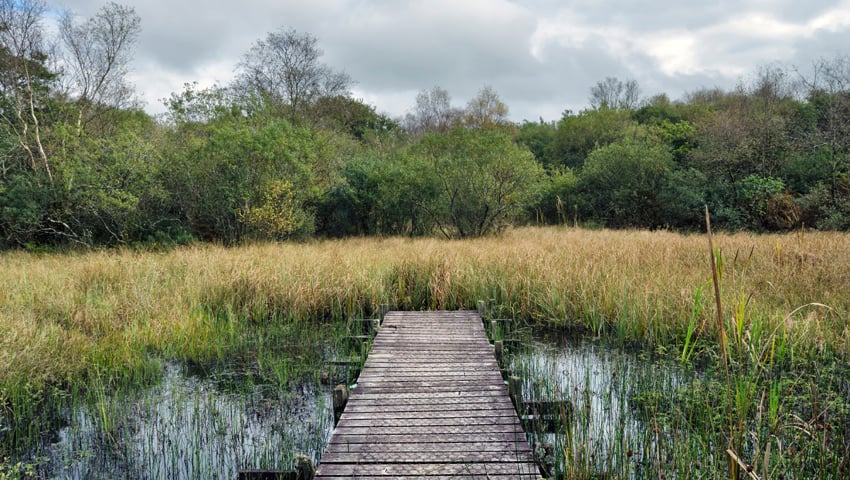Article by Chris D’Agorne, Director of Regenerata Ltd
There’s a strange pattern of behaviour in conservation which is ‘backed by science’. Rather than creating new ponds, conservationists re-excavate existing ones as they become silted up or covered with vegetation.
I just found a painful example of this on a heathland in Devon. A pond which I had been monitoring as it slowly become covered with sphagnum – the birth of a bog. This is how peat begins, first a pond covered by sphagnum, then the moss building up in layers to form a ‘lens’ that rises above the water table.
Yet the new bog never had a chance, because a wildlife charity came in and ‘managed’ the habitat. They stripped off and dumped all the sphagnum, returning the pond to an open water habitat.
The problem is, this kind of management is ‘backed by science’. The website Conservation Evidence recommends this intervention, claiming it is ‘beneficial’.
But this is odd.
In the UK, we have very little swamp and wet woodland habitat, partly because we recommend ‘restoring’ ponds when they grow over. Instead, we could be doing what actually happens in the wild – creating new ponds nearby.
In most cases, there is plenty of space to create a pond nearby – there certainly was in the example above. A new pond has the advantage of resetting succession to zero, without any invasive plant or animal species, avoiding biocontrol issues. The excavation might damage a tiny proportion of the vast terrestrial habitat, but the alternative – silt removal – clouds the pond water and damages pondlife.
Most pond species are either winged or able to move fairly rapidly from one aquatic ecosystem to another due to the transience of these habitats in nature, so it doesn’t take long for a new pond to get established, with high biodiversity. It generally has the advantage of low levels of shade due to fewer riparian trees, increasing water temperatures, boosting invertebrate abundance.
And it is well established that clusters of ponds have higher benefit than a single pond on its own, providing redundancy for threatened species and a multitude of different water conditions. So creating a second pond (or even a third) before the first one closes over would be an effective strategy to enhance biodiversity.
This is not even mentioning the benefits that leaving the existing pond system to close over has for wildlife.
Wet woodland is a priority habitat in the UK, and we have lost a lot of it due to drainage and agricultural clearance.
Visit one and you’ll see that it’s a magical place, with gnarled, moss-covered trunks and birds aplenty – it can form when a pond closes over. It is even more obvious that removing a peat bog just as it is forming is an odd decision when the same (unnamed) charity is restoring them a matter of miles away.
This commentary first appeared on LinkedIn and is republished with kind permission
